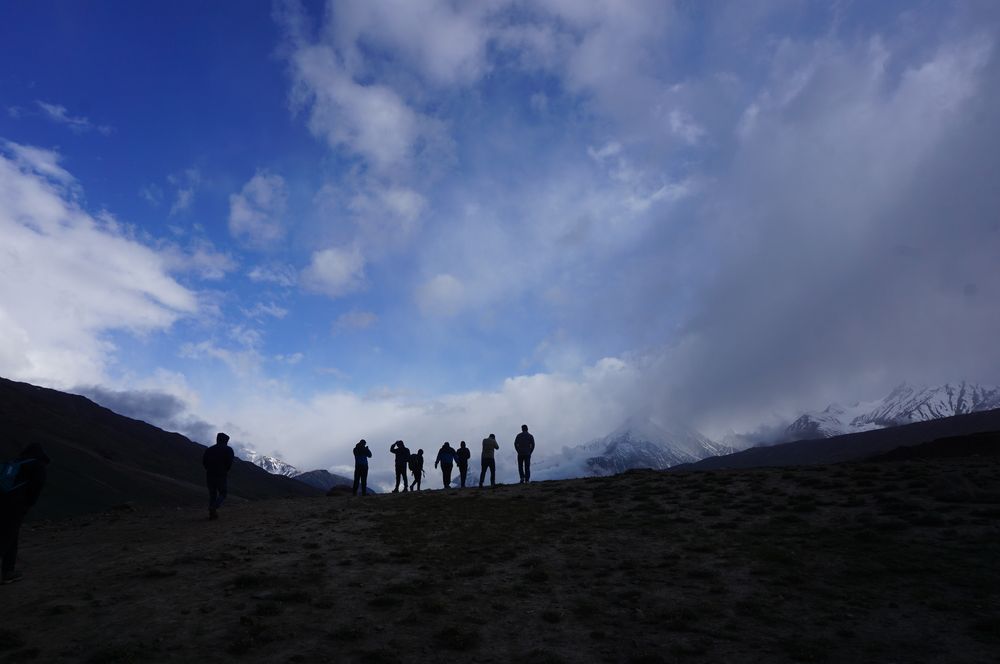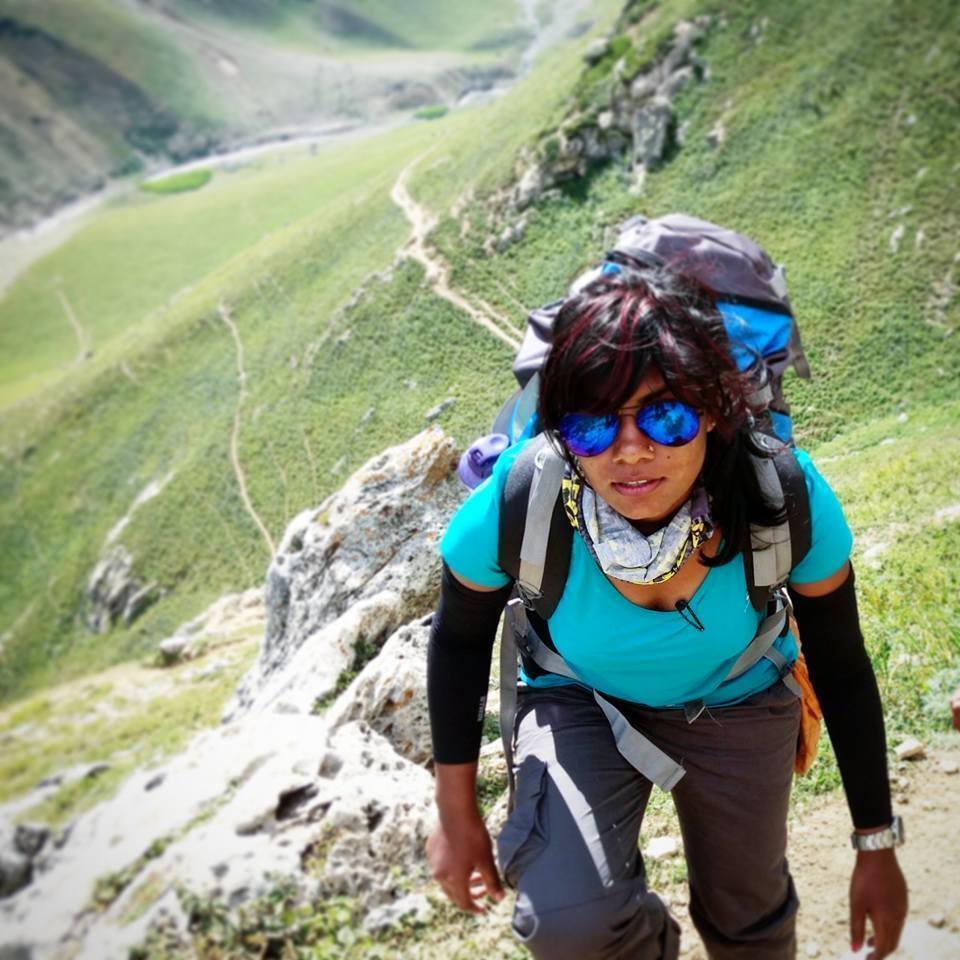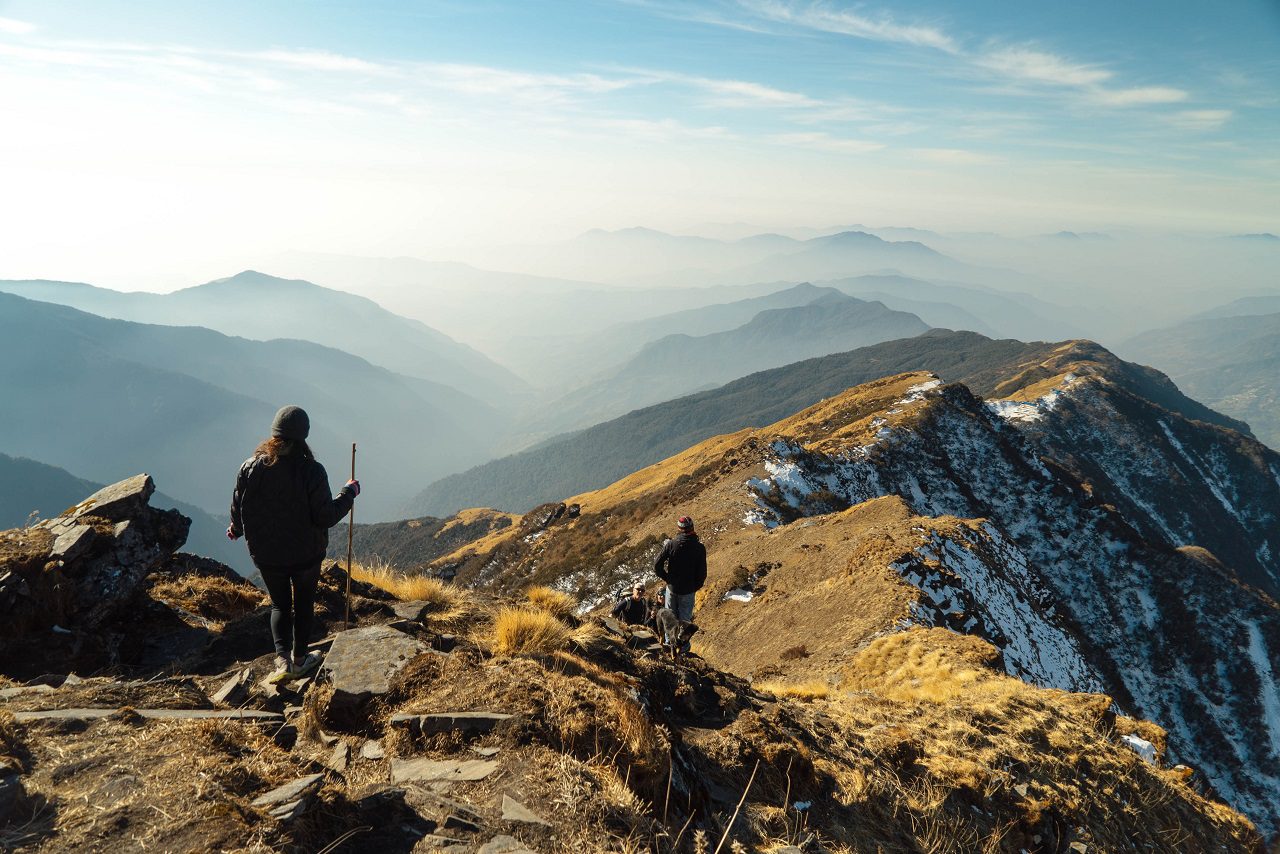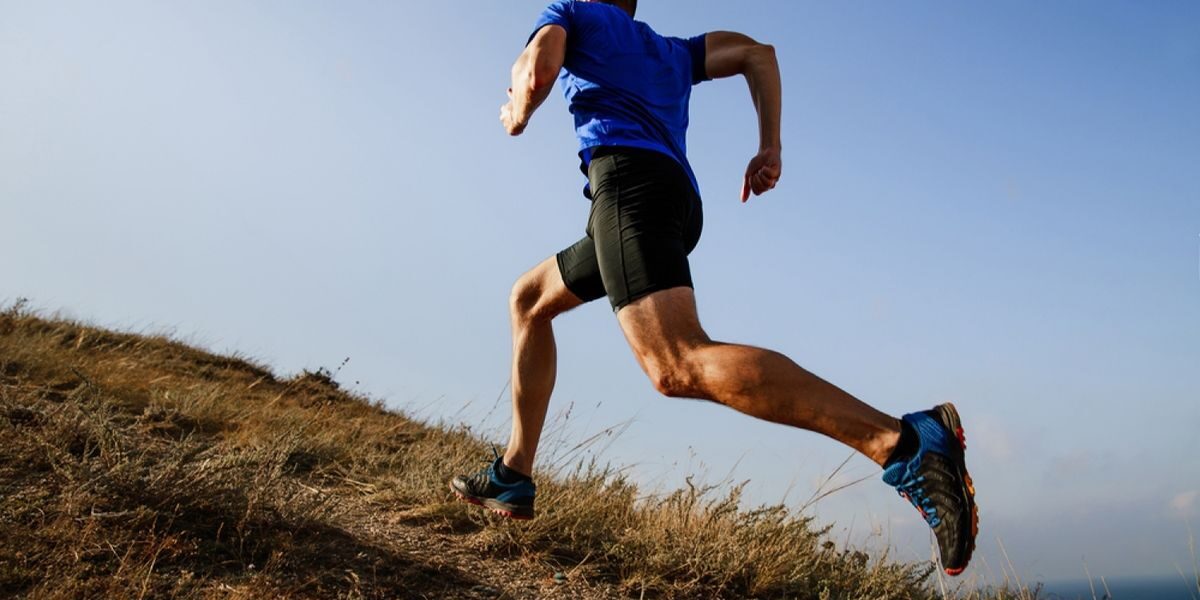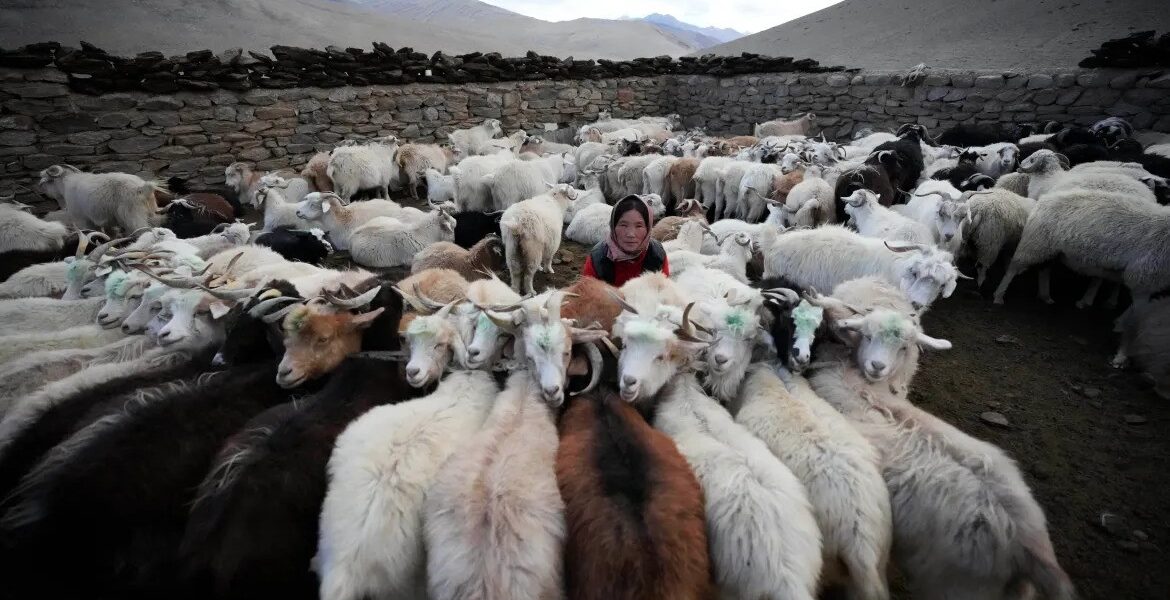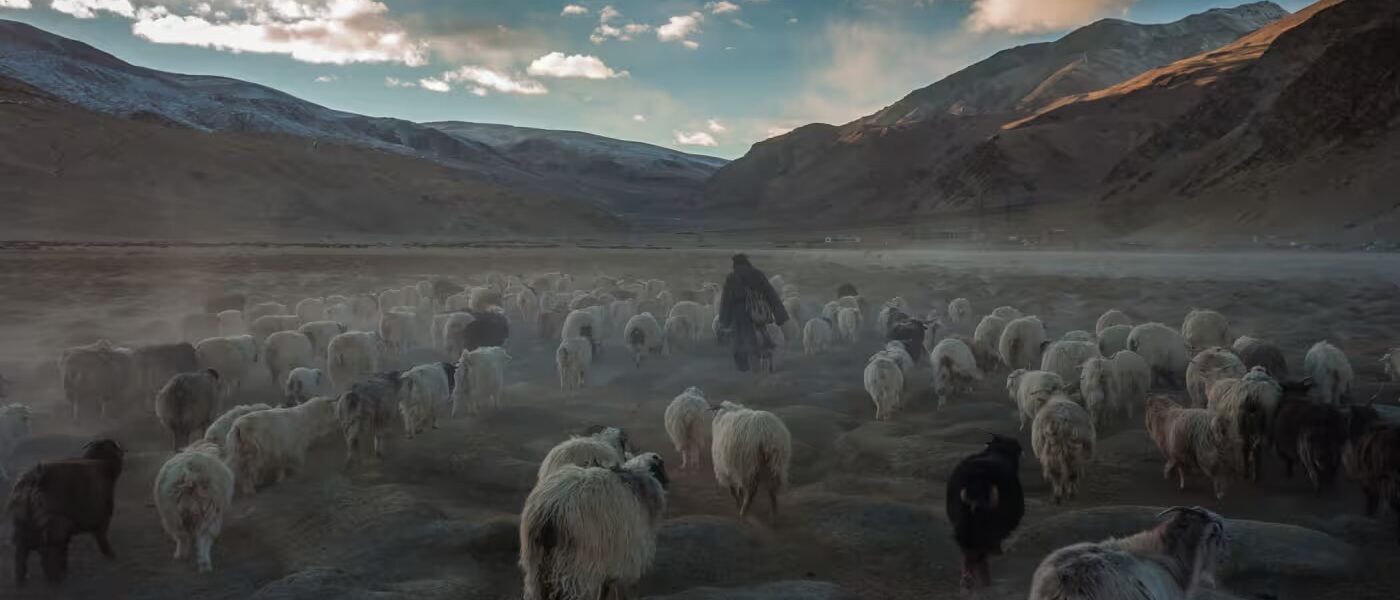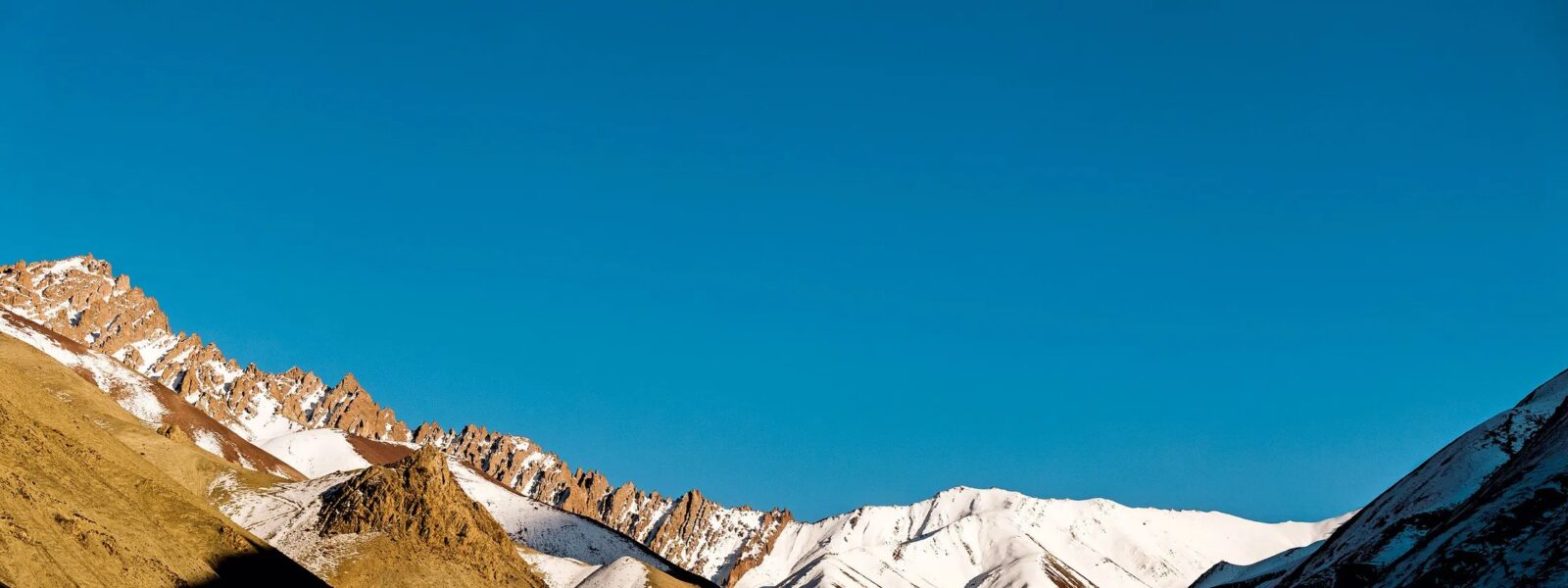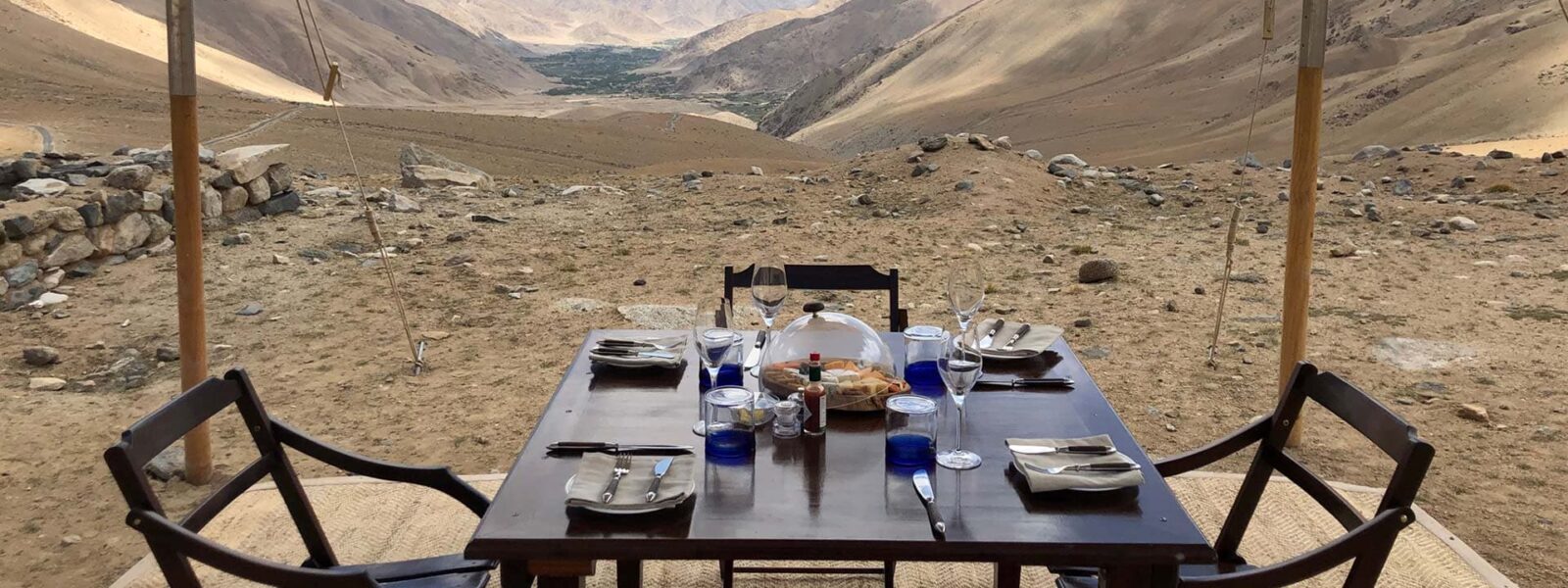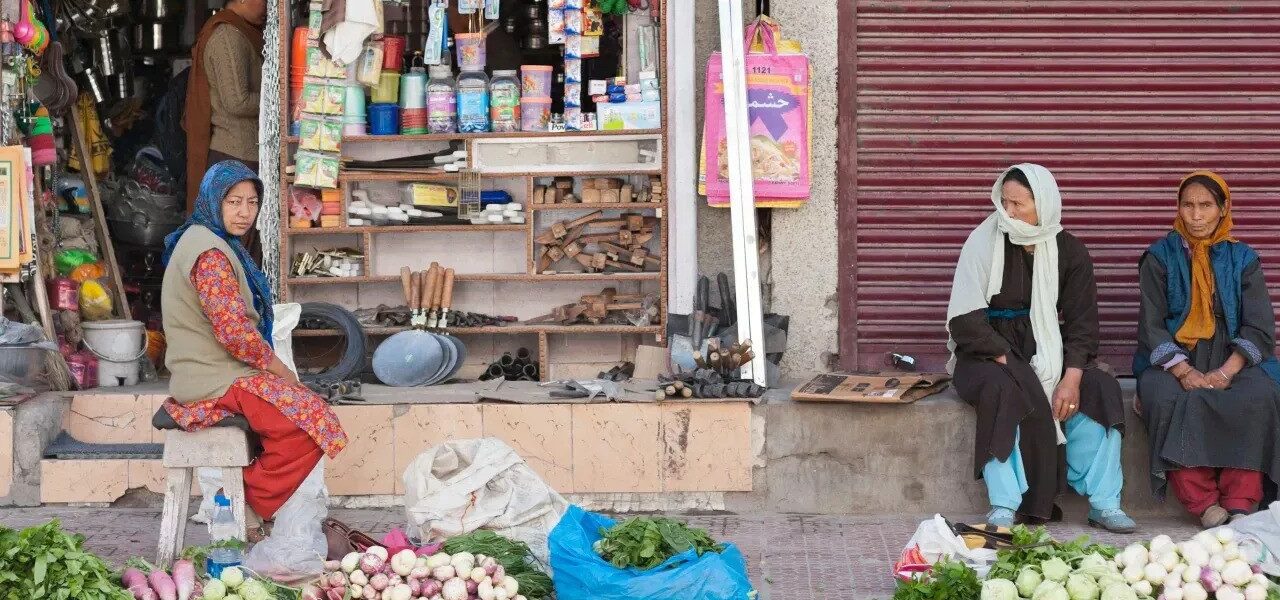Fitness Tips for High-Altitude Treks in Ladakh: Embarking on a high-altitude trek in Ladakh is an exhilarating adventure that challenges both your body and mind. However, trekking at an elevation of 15,000 feet or more requires more than just enthusiasm; it demands top-notch fitness, preparation, and understanding of the unique challenges posed by the altitude. In this guide, we will walk you through the essential fitness tips to help you stay strong and perform optimally on a Ladakh high-altitude trek.
—
Why Fitness is Key for High-Altitude Treks in Ladakh
The Physical Demands of High-Altitude Treks
High-altitude trekking in Ladakh involves hiking through rugged terrains, steep ascents, and descents, all while coping with reduced oxygen levels at 15,000 feet or higher. At these altitudes, your body works harder to get the oxygen it needs, making even simple tasks feel more strenuous. Without proper fitness, trekkers may experience fatigue, muscle soreness, and even altitude sickness.
“I followed a strict fitness regimen for three months before my trek in Ladakh, and it paid off. The steep climbs were tough, but I managed to keep up with my group.”
— David L., Teacher, USA
—
The Importance of Acclimatization for High-Altitude Treks
Acclimatization is the process of gradually adjusting to higher altitudes. It’s essential for avoiding acute mountain sickness (AMS), a common issue when trekking above 10,000 feet. Without proper acclimatization, symptoms such as headaches, dizziness, and shortness of breath can set in.
For best results, plan your trek with rest days to help your body adjust, and incorporate breathing techniques like controlled breathing and diaphragm exercises to cope with lower oxygen levels.

“I made sure to take it slow and rest every few days. My fitness helped me handle the trek, but acclimatization was key.”
— Priya M., Software Developer, India
—
Pre-Trek Training: Building Endurance and Strength
Endurance Training for Ladakh’s High Altitudes
Trekking at 15,000 feet is physically taxing, making endurance training critical. Activities like running, cycling, and swimming improve your cardiovascular capacity, allowing your body to efficiently use oxygen.
We recommend starting endurance training at least 3-6 months before your trek. Aim for activities that elevate your heart rate, such as:
- Running: Start with 20-30 minute runs, gradually increasing to an hour.
- Cycling: Uphill cycling is excellent for building leg strength and stamina.
- Hiking: If possible, practice on inclines to simulate the uphill treks in Ladakh.
A well-conditioned cardiovascular system helps reduce the strain on your body in a low-oxygen environment.
“The cardio training I did before my trek was a game-changer. I could keep going even when the air got thin.”
— Alice R., Travel Blogger, Australia
—
Strength Training to Handle Steep Ascents and Descents
To tackle Ladakh’s steep climbs, your leg muscles, core, and upper body need to be strong and stable. Focus on:
- Leg exercises: Squats, lunges, and step-ups to build quad and hamstring strength.
- Core exercises: Planks, Russian twists, and mountain climbers for core stability.
- Upper body strength: Push-ups and pull-ups to support balance and weight while carrying a backpack.
Building muscular strength helps protect your joints from injury and improves your ability to maintain balance on rocky or uneven trails.
—
Flexibility and Mobility Exercises to Prevent Injuries
Flexibility is often overlooked in fitness preparation but is crucial for preventing injuries like sprains or muscle strains during a trek. Stretching routines, especially targeting your hamstrings, calves, and hip flexors, increase mobility and improve your range of motion.
Incorporate these exercises into your workout plan:
- Hamstring stretches: To prepare for downhill walking.
- Hip flexor stretches: Essential for long uphill climbs.
- Calf stretches: Vital for tackling steep inclines.
“I noticed a huge difference after adding yoga and flexibility training to my routine. It helped me stay agile and avoid injuries.”
— Robert G., Architect, UK
—

Trekking Nutrition: Fueling Your Body for Success
Essential Nutrition for High-Altitude Treks
Proper nutrition is critical for sustained energy during your trek. Carbohydrates are your best friend at high altitudes because they provide a quick and steady source of energy. Include:
- Complex carbs: Brown rice, whole grains, and oats for sustained energy.
- Proteins: Lean meats, eggs, and legumes to maintain muscle mass.
- Healthy fats: Nuts, seeds, and olive oil to keep you satiated and fueled for long hours.
“A high-carb diet was key to maintaining my energy levels on the trek. I also carried protein bars for a quick snack.”
— Samantha L., Marketing Manager, Canada
—
Hydration Strategies for High-Altitude Climates
At high altitudes, dehydration is a common problem due to increased respiration and lower humidity. Drink at least 3-4 liters of water per day and include electrolyte supplements to replace lost minerals. Avoid alcohol and caffeine as they can lead to dehydration.
—
Mental Preparation for High-Altitude Trekking
Building Mental Toughness for Trekking at 15,000 Feet
Mental resilience is just as important as physical fitness when trekking in extreme conditions. Long treks, physical exhaustion, and altitude-related challenges can take a toll on your mental health. Meditation, visualization, and positive affirmations can help you maintain focus and push through difficult moments.
“The trek was tough, but staying mentally focused helped me push through the hardest parts. A positive mindset is everything.”
— John M., Engineer, Germany
—
Dealing with Altitude Sickness: Prevention and Recovery
Recognizing the Symptoms of Altitude Sickness
Altitude sickness can strike even the fittest trekkers, and recognizing the symptoms early can prevent serious complications. Symptoms include:
- Headaches
- Nausea
- Dizziness
- Shortness of breath
To avoid altitude sickness, ascend gradually, stay hydrated, and avoid overexertion.
—
Effective Breathing Techniques for Low Oxygen Levels
Proper breathing techniques, such as deep belly breathing and controlled exhalation, can help you conserve energy and maximize oxygen intake. Practice breathing deeply and exhaling slowly to adjust to the thinner air at high altitudes.

“Focusing on my breathing really helped me manage the thin air. It was a simple but effective technique.”
— Sophia P., Journalist, South Africa
—
Best Exercises to Prepare for Ladakh’s High-Altitude Treks
Cardiovascular Workouts for Enhanced Stamina
For stamina building, focus on cardio exercises such as running, swimming, and interval training. These activities condition your lungs and heart to cope with lower oxygen levels, crucial when trekking at 15,000 feet.
—
Leg and Lower Body Workouts for Steep Climbs
Your legs will take most of the load during a trek. Incorporate leg-strengthening exercises such as squats, lunges, and step-ups to build the strength and endurance required for uphill treks.
“Leg day was never my favorite, but it was necessary! The strong legs I built were invaluable on those steep Ladakh climbs.”
— Michael K., Photographer, USA
—
Packing the Right Gear for a High-Altitude Trek in Ladakh
Essential Trekking Gear for Ladakh
Having the right trekking gear can make or break your high-altitude adventure. Essential items include:
- Trekking boots: Comfortable, waterproof, and broken in.
- Layered clothing: To adapt to changing weather conditions.
- Trekking poles: Helpful for balance and reducing the strain on your knees during descents.
- Backpack with hydration system: To ensure easy access to water.
“Having the right gear made my trek so much more comfortable, especially the trekking poles!”
— Carlos T., Chef, Spain
—
Final Fitness Tips for a Successful High-Altitude Trek in Ladakh
- Prioritize rest: Ensure adequate sleep and rest before your trek.
- Stay positive: A positive mindset can keep you motivated through tough conditions.
- Practice self-care: Stretch, hydrate, and refuel your body during and after the trek.
By following these fitness tips and preparing your body and mind, you’ll be well-equipped to tackle the challenges of a high-altitude trek in Ladakh and emerge stronger, healthier, and fulfilled by the experience.

—
Q&A Section
Q1: How should I prepare physically for a high-altitude trek in Ladakh?
A: Focus on building cardiovascular endurance through running, cycling, and swimming, along with strength training for your legs, core, and upper body.
Q2: What kind of training is best for trekking at 15,000 feet?
A: Endurance and strength training are key. Start training 3-6 months before the trek with activities like running, uphill hiking, squats, and lunges.
Q3: How can I avoid altitude sickness during a trek?
A: Acclimatize slowly, stay hydrated, avoid overexertion, and practice deep breathing techniques.
Q4: What exercises are recommended for building endurance for Ladakh treks?
A: Running, cycling, swimming, and interval training are excellent for building stamina for high-altitude treks.
Q5: What should I eat before and during a high-altitude trek?
A: Prioritize complex carbs, lean proteins, and healthy fats to fuel your body. Stay hydrated and include electrolyte-rich foods or supplements.
Q6: How do I stay hydrated during a high-altitude trek?
A: Drink 3-4 liters of water per day, and include electrolytes to replenish minerals lost through sweat.
Fitness Tips for High-Altitude Treks in Ladakh
Fitness Tips for High-Altitude Treks in Ladakh | The journey through Ladakh mirrors the very essence of unraveling unknown horizons, as its dramatic landscapes and unique cultural identity awaken the deepest sense of wonder and exploration. Fitness Tips for High-Altitude Treks in Ladakhdelves into this realm where inner peace intertwines with the wild, untouched beauty of Ladakh. From the snow-capped peaks to the serene monasteries, every step in Ladakh is a step toward self-discovery. The mountains, ancient paths, and unspoken mysteries stretch before travelers, offering a meditative experience where each encounter feels both effortless and transformative. Whether it’s trekking across remote valleys or sitting quietly beside a sacred lake, Ladakh invites those who seek a deeper connection to the natural and spiritual world.

The Fitness Tips for High-Altitude Treks in Ladakh’s Fitness Tips for High-Altitude Treks in Ladakh
The monasteries of Ladakh stand as living monuments to the region’s profound spiritual heritage. With origins dating back over a thousand years, these ancient structures are both places of worship and repositories of art, culture, and wisdom. Hemis Monastery, one of the largest in Ladakh, is renowned for its annual festival, featuring colorful mask dances performed by monks. The history of these monasteries reflects Ladakh’s role as a crossroads between India, Tibet, and Central Asia, where religious and cultural influences have intertwined over the centuries.
The Tibetan Buddhist influence is especially evident in the architecture and daily life of the monks. Prayer wheels, intricate murals, and the soft hum of chants fill the air as visitors explore the monastery grounds. Each monastery, from the remote Lamayuru to the awe-inspiring Thiksey, offers a window into the spiritual heart of Ladakh. These centers of meditation, learning, and community life continue to thrive, preserving traditions that have shaped Ladakh for generations.
Why Visit Ladakh for Fitness Tips for High-Altitude Treks in Ladakh?
Ladakh is a destination that transcends mere travel. It offers a journey that touches both the outer and inner landscapes, making it a perfect setting for those who seek to unravel their own unknown horizons. The region’s breathtaking scenery—from towering mountain ranges to hidden valleys—provides not just an escape but a space for contemplation and growth. Ladakh’s culture, deeply rooted in Buddhist practices, invites visitors to reflect on their own lives and the world around them.
Ladakh’s people, known for their warmth and hospitality, add to the richness of the experience. Villages like Sumda Chun and the legendary Nubra Valley introduce travelers to a way of life that is intricately connected to nature and spirituality. Staying in local homestays allows for immersive experiences where one can learn about traditional Ladakhi customs, share meals made from local produce, and participate in community rituals.

Beyond its natural beauty, Ladakh offers a unique opportunity to explore oneself. The vastness of the region’s plateaus and the clarity of its skies seem to mirror the vastness of the human spirit. Whether it’s standing atop a mountain pass at 18,000 feet or meditating in a centuries-old monastery, Ladakh helps unravel the unknown horizons within each traveler.
Finding the Best Fitness Tips for High-Altitude Treks in Ladakh in Ladakh
Finding the best places in Ladakh to experience “Fitness Tips for High-Altitude Treks in Ladakh” involves venturing off the beaten path. Ladakh’s lesser-known treks, such as those leading to secluded monasteries or high-altitude lakes, offer unparalleled opportunities for solitude and reflection. The Markha Valley trek, for instance, takes travelers through verdant valleys, ancient villages, and high-altitude passes, allowing for both physical and spiritual exploration.
Ladakh’s iconic lakes, including Pangong Tso and Tso Moriri, are ideal spots for quiet contemplation. Their still waters reflect the sky, creating a mesmerizing landscape that feels timeless and infinite. Sitting beside these lakes, especially at dawn or dusk, brings an overwhelming sense of peace and connection with nature.

For those interested in Ladakh’s spiritual heritage, exploring monasteries such as Alchi, Phyang, or Diskit can be a transformative experience. These sites are not just places of worship but also centers of art, philosophy, and wisdom. Visiting these monasteries, with their ancient murals and intricate statues, offers insight into Ladakh’s rich cultural tapestry.
Ladakh’s Atmosphere and Fitness Tips for High-Altitude Treks in Ladakh
Ladakh’s atmosphere is unlike any other place on Earth. The stark contrasts between the rugged mountains and the serene, tranquil monasteries create an environment that feels both raw and sacred. The traditional decor in Ladakhi homes and religious sites reflects this balance, with mud-brick houses adorned with prayer flags and colorful thangkas (Buddhist paintings) that add warmth and spiritual meaning to the space.

The interiors of Ladakhi homes, often simple and functional, are filled with symbols of devotion. Small shrines dedicated to Buddhist deities are common, and the air is often fragrant with incense. The use of earthy materials, like stone and wood, along with brightly colored textiles, creates an inviting and peaceful space, perfect for relaxation and reflection.
Traditional Ladakhi Cuisine
Traditional Ladakhi cuisine is an integral part of the region’s identity, offering a unique blend of flavors that reflect its harsh climate and remote location. Hearty, warming dishes such as thukpa (noodle soup) and momos (dumplings) provide the sustenance needed to endure Ladakh’s cold temperatures. Skyu, a thick stew made with root vegetables and barley, is another staple of the Ladakhi diet, designed to nourish both body and spirit.

Drinks like butter tea, made with yak butter and salt, are a must-try for anyone visiting Ladakh. This rich, savory drink is not only warming but also hydrating, making it essential for those venturing into the high-altitude regions of Ladakh. Chang, a local barley beer, is often enjoyed during festivals and community gatherings, adding a sense of joy and camaraderie to any occasion.
Live Cultural Fitness Tips for High-Altitude Treks in Ladakh in Ladakh
Ladakh is home to a vibrant cultural scene, with festivals and live performances held throughout the year. The Hemis Festival, which celebrates the birth of Guru Padmasambhava, is one of the largest and most famous events in the region. Monks dressed in elaborate costumes perform cham dances, which depict the triumph of good over evil. The energy of the festival, with its bright colors, rhythmic music, and elaborate rituals, draws visitors from around the world.
Other local festivals, such as the Losar (New Year) and Ladakh Festival, provide visitors with the chance to witness traditional dance, music, and crafts that have been passed down through generations. These events are more than just entertainment; they are a celebration of Ladakh’s rich cultural heritage and its deep connection to the spiritual world.
Trekking and Outdoor Activities Fitness Tips for High-Altitude Treks in Ladakh
Ladakh is a trekker’s paradise, offering some of the most stunning and challenging routes in the world. From the famous Fitness Tips for High-Altitude Treks in Ladakh, which follows the frozen Zanskar River, to lesser-known routes like the Sham Valley or Nubra Valley treks, Ladakh’s landscape offers endless possibilities for adventure and discovery. The high-altitude passes, such as Khardung La and Chang La, offer breathtaking views of snow-capped peaks and sprawling valleys.

Wildlife enthusiasts will also find Fitness Tips for High-Altitude Treks in Ladakh to be a haven for rare species such as the snow leopard, Himalayan blue sheep, and the Tibetan wild ass. Winter expeditions to spot the elusive snow leopard in the Hemis National Park are gaining popularity among wildlife photographers and conservationists alike.
The Importance of Preserving Ladakh’s Fitness Tips for High-Altitude Treks in Ladakh
Ladakh’s rich cultural and environmental Fitness Tips for High-Altitude Treks in Ladakh is under increasing threat from climate change and mass tourism. Preserving this unique region requires careful attention to sustainable tourism practices. Choosing eco-friendly accommodations, supporting local businesses, and participating in community-led conservation efforts are just a few ways that visitors can contribute to the preservation of Ladakh’s natural and cultural heritage.
Ladakh’s people have a long history of living in harmony with their environment, practicing sustainable agriculture, and maintaining a deep spiritual connection to the land. Visitors are encouraged to follow the same principles, leaving no trace and respecting the fragile ecosystems that make Ladakh so special.
Etiquette and Tips for Visiting Fitness Tips for High-Altitude Treks in Ladakh
Before visiting Ladakh, it’s essential to understand and respect the region’s customs and traditions. As a deeply spiritual place, Ladakh requires visitors to dress modestly, especially when visiting monasteries or attending religious ceremonies. Always ask for permission before taking photographs inside monasteries or of local people.
Medical Fitness Tips for High-Altitude Treks in Ladakh
Spa trail Fitness Tips for High-Altitude Treks in Ladakh
Fitness Tips for High-Altitude Treks in Ladakh

When Fitness Tips for High-Altitude Treks in Ladakh, remember to stay on designated paths to avoid damaging fragile ecosystems. Tipping is appreciated but not expected in most settings, and it’s important to carry cash, as many remote areas do not accept credit cards. Lastly, be mindful of altitude sickness and take the necessary precautions when traveling to higher elevations.
Conclusion: Enjoying Fitness Tips for High-Altitude Treks in Ladakh in Ladakh
Ladakh is a place where the physical and spiritual worlds converge, offering travelers a journey unlike any other. Whether you’re trekking across high-altitude deserts, exploring ancient monasteries, or simply sitting in quiet reflection by a mountain lake, Ladakh invites you to unravel your own unknown horizons. By respecting the region’s traditions and practicing sustainable tourism, you help ensure that Ladakh’s beauty and cultural richness will be preserved for future generations to explore and enjoy.
